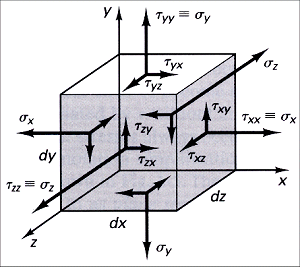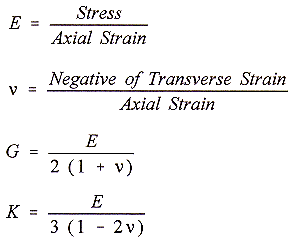|
The concepts of stress and strain are introduced to provide scalability between geometries for laboratory specimens and real-world applications. The generalized Hooke's law for relating stress and strain is given by σij = Eijkl εkl where the 81 components of the fourth-order tensor Eijkl are known as the elastic constants. For materials described by anisotropic, linear-elastic behavior, it can be shown that this tensor can be reduced to 21 distinct components. For orthotropic materials this number is reduced to nine components. For isotropic materials this number is further reduced to two components. |
 from Engineering Mechanics of Solids by E.P. Popov, Prentice Hall, 1991, p. 7 |
